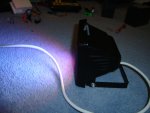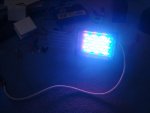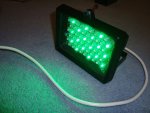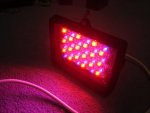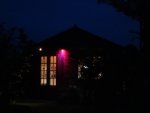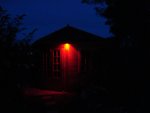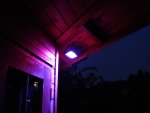Andrew Cowan
Senior Member
My latest project - an RGB floodlight.
It uses 54 LEDs (18R, 18G, 18B). All the LEDs are 110 degree angle, superbright superflux LEDs (in square packages).
The device draws 300mA at 12V. Control is via an 08M running a pulsout code.
I have used IRF530 FETs as the switching device. They are not logic level FETs, and have no heatsink, but I am only passing 100mA through each one, so they just get warm.
It's much to bright to look at, and will illuminate most of the garden at night.
Don't worry about the mains cord - it's only 12V. The case is from a 150W halogen lamp (ebay).
Andrew
It uses 54 LEDs (18R, 18G, 18B). All the LEDs are 110 degree angle, superbright superflux LEDs (in square packages).
The device draws 300mA at 12V. Control is via an 08M running a pulsout code.
I have used IRF530 FETs as the switching device. They are not logic level FETs, and have no heatsink, but I am only passing 100mA through each one, so they just get warm.
It's much to bright to look at, and will illuminate most of the garden at night.
Don't worry about the mains cord - it's only 12V. The case is from a 150W halogen lamp (ebay).
Andrew
Attachments
-
422.6 KB Views: 166
-
294 KB Views: 147

